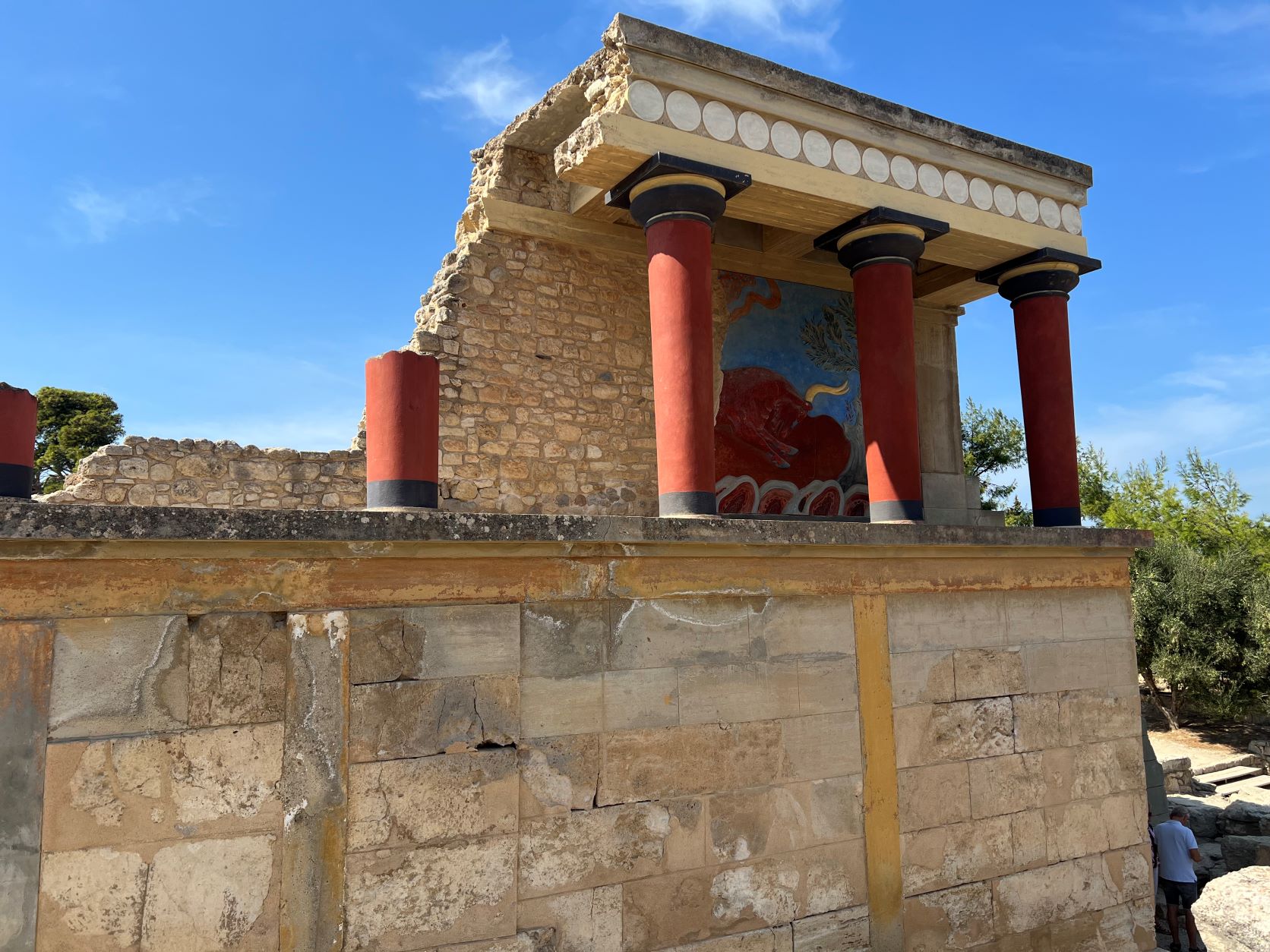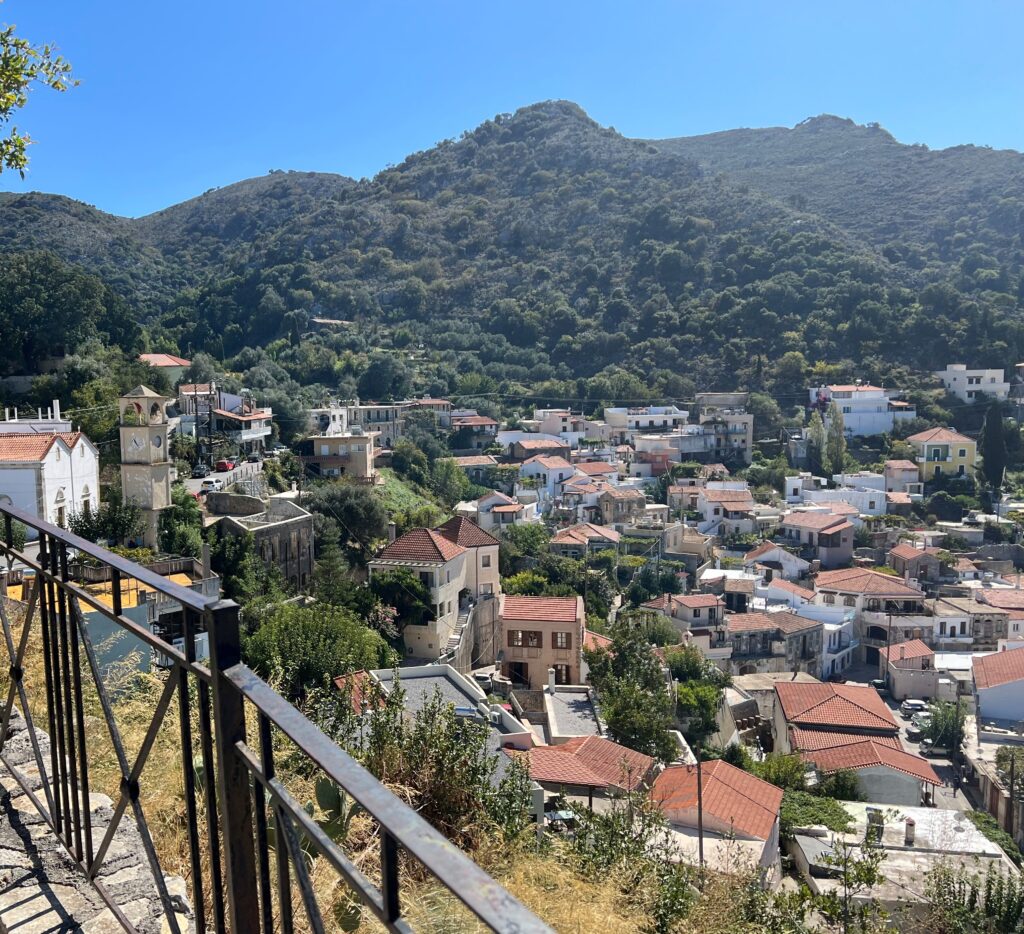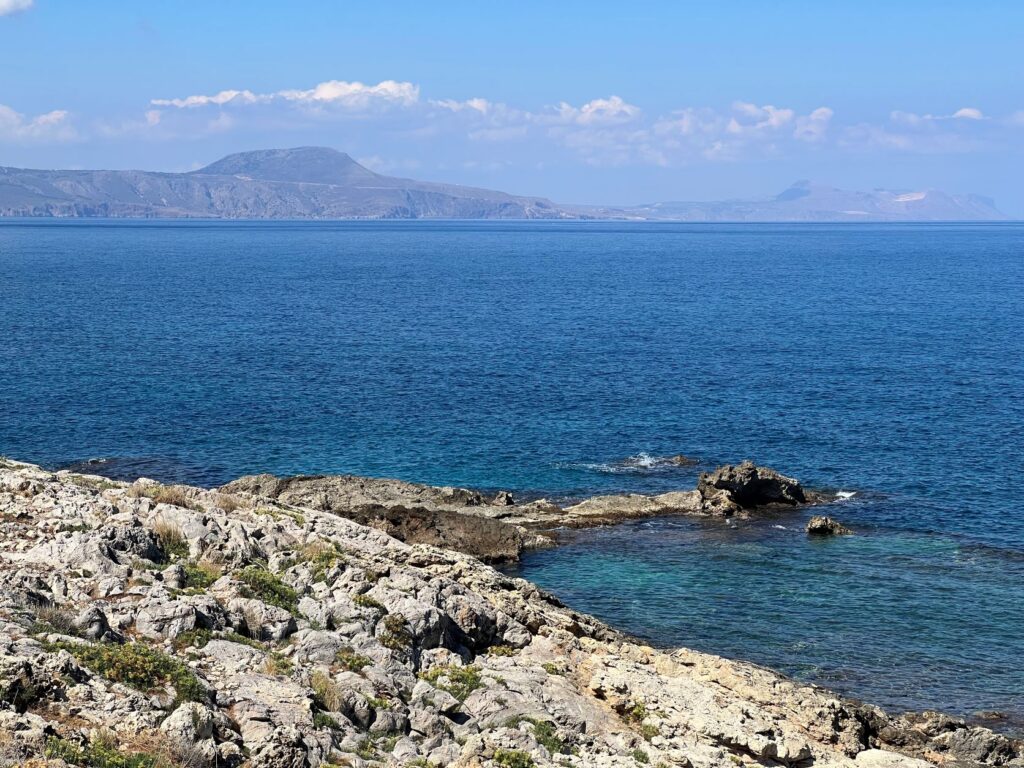A powerful mystery enshrouds the palatial stones of the Archaeological Site of Knossos despite what’s been learned in the last 100 years about this highly sophisticated Minoan culture dating back 5,000 years and recognized as Europe’s first civilization. While I have seen Crete and much of the world in National Geographic since I was a child, in museums and videos, by drone fly-overs and fly-throughs and scene reenactments, there is nothing like actually being in the place, setting foot on the same soil as others did thousands of years ago. It takes your breath away and one has to stop and re-center before proceeding to take it all in.
The palace of Knossos was that experience. Multi-story, with more than 1,500 rooms on five floors and comprising 150,000 square feet (the size of more than two football fields), the archaeological dig spreads across a hillside on Crete’s north coast near Heraklion. Flourishing for over 500 years, this culture began unraveling by natural incidents – presumably volcano and tsunami based on the types of rubble, sand and ash that scientists have found during excavations in the 20th century. But there are many theories about the palace’s demise and opinions about the excavation work conducted by various scientists. All this only adds to the richness and the intrigue of the palace’s story.
The first place was built around 1900 BC, the largest in Minoan Crete, the seat of King Minos and other legends. However, the Minoans were no myth and remains of the earliest settlement dating to 6700 BC have been found in the many levels of massive blocks, corridors, steps, benches, shrines and other valuable artifacts. Visible below through parts of the ongoing dig as one crosses the site are its famous drainage system and intricate system of plumbing that channeled drinking water from a nearby source. Striking landmarks such as the Horns of Civilization, elaborately decorated pottery jars as tall as people and used for storage and partially restored brightly painted frescoes inspire awe with their remarkable beauty and artisanship. It’s been said many times, but it is true that the frescoes, some reimagined from the paint and other designs, are stunning in their concept and detail – the Prince of the Lilies fresco in the South Entrance corridor, 1550 BC; the copy of a fresco depicting griffins (a fantastical creature with the head of an eagle and body of a lion that symbolized royal and divine power) in the Throne Room and, from peering around a blocked-off hallway, the Ladies in Blue fresco illustrating richly jeweled female figures and depicting the opulence of the court.
It’s impossible not to be struck by the magnitude of the palatial landscape and the tiers of rubble, partial walls and staircases that have been well-preserved. Scientists continue to discover more and many sections are fenced off for more excavation and restoration. Some of the written descriptions are conjecture but still logical, for example, the interpretations of the Throne Room with its small but stately stone seat and large, likely ceremonial, stone wash basin.
In nearby Heraklion, the artifacts found in Knossos and other Minoan historical sites that cover the area are presented in extensive detail in the Heraklion Archaeological Museum. We opted out of that trip – easily another day – filled with new information and insights from our broad “onsite” view and a whetted thirst for more the next time.




